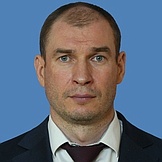Regional flags and emblems


PROFILE
Established 7 December 1934
Capital Omsk
The Omsk Region is part of the Siberian Federal District
Area 141,100 sq km
Population 1 805 400 (2025)
Ethnic groups
(2020 National Census, %)
Russian – 88,71
Kazakh− 4,14
German− 1,75
Tatar −1,64
Other – 3,76
Administrative divisions (2024)
Municipal districts − 32
City districts − 1
Rural towns − 26
Rural districts − 363
Geography and climate
The Omsk Region is located in the south of Western Siberia. At its widest points, the region is 600 km north to south and 500 km west to east. It borders the Tyumen, Tomsk and Novosibirsk regions. It also has a state border with Kazakhstan.
The main rivers are the Irtysh and its confluents the Ishin, Om and Tara. The region has many lakes; the largest are Saltaim, Tenis, Ik and Ebeity.
The region has a continental climate. January temperatures average –17.1°C; July temperatures average 17.9°C. Precipitation averages 46 mm in January and 153 mm in July.
The region has 16 state nature regional sanctuaries, 3 natural landmarks and Bird harbor Nature Park.
Government
The legislative branch in the region is represented by the Legislative Assembly of the Omsk Region, which is the permanent supreme and only legislative (representative) body of authority in the region. Deputies are elected to the legislature for five years.
The Assembly has 44 deputies, with 22 of them running in single-mandate constituencies and the other 22 in the single electoral district in proportion to the number of votes cast for lists of candidates nominated by electoral associations. The current Assembly was elected in September 2021. Its term expires in September 2026.
The executive branch is represented by the Government of the region, the permanent supreme branch of the executive body of the region and other executive authorities.
The Governor of the Omsk Region is the region’s highest-ranking official , who heads the executive branch and forms the Government of the region. The Governor is elected for five years by Russian citizens who permanently reside in the region.
The term of office of the current incumbent expires in September 2028.
Economy and natural resources
The Omsk Region has traditionally been an important logistic, industrial and agricultural center of Russia with a significant personnel, economic, intellectual as well as nature potential.
The economy is based on the industrial sector, oil processing, chemical and petrochemical industries, machine-building and metal processing, energy sector, food industry, agriculture and forestry. Industrial output accounts for about 40% of the regional GDP.
The largest industrial facilities are Gazpromneft ONPZ; Polyot, a branch of the Khrunichev State Research and Production Space Centre; Titan Group; Salyut Gas and Turbine Plant, a branch of the Omsk Baranov Engine-Building Association; Omsktekhuglerod; Omskshina; Omsk Pipe Insulation Plant.
Agriculture is well developed and accounts for about 10% of the regional GDP. Crop production accounts for 55% and cattle breeding for 45% of agricultural production in the region. The region grows wheat, rye, barley, oats, beans, potatoes and vegetables.
The region has 17 types of minerals, including energy resources, mineral salts and therapeutic mud.
The region has trade relations with 89 countries.
Culture and tourism
The Omsk Region has boundless wheat fields in the south, the impassable taiga in the north, the silver ribbon of the Irtysh River and unique lakes famous for their mineral salts, peloids, thermal and mineral waters.
Among the historical landmarks are ancient settlements, some of which are located in contemporary Omsk, on the left bank of the Irtysh River near the Leningradsky Bridge; near the village of Yekaterinovka in the Tara District; the Tatarsky Uval settlement near the village of Okunevo in the Muromtsevo District, and others.
The Solomatin State Bolsherechensk Zoo is Russia’s only rural zoo. It covers an area of nine hectars in the picturesque valley of the River Bolshaya, not far from its confluence with the Irtysh, 200 km from the regional centre. Over 100,000 people visit the zoo every year.
The current cultural space of the Omsk Region has been forming since the 18th century, when Omsk became one of the strongholds in Siberian exploration. The history of the city began when a fortress was built on the left bank of the Om River. The city has a historical and cultural complex that includes a series of historical buildings and reconstructed places. The complex offers guided tours, exhibitions dedicated to folk crafts as well as the traditional everyday way of life.
The culture of the Omsk Region is diverse and unique. Its theatres are well-known in Russia and abroad: the Omsk Academic Drama Theatre, the Omsk Musical Theatre, the Academic Symphony Orchestra of the Omsk Philharmonic Hall, the Omsk Russian Folk Choir, the Harlequin Omsk Puppet, Actor and Mask Theatre.
Under the auspices of the Sibir (House of Friendship) are operating 24 national cultural centres. The Soul of Russia festival and the Siberian Theatre Seasons festival have been held there since the 1990s.
The Bolsherechensk municipal district has the Old Lore of Sibir, a state historical and cultural museum-reserve. The open-air museum gives visitors an opportunity to learn about the history and culture, architecture, crafts, archeology and nature of the Omsk Region.


